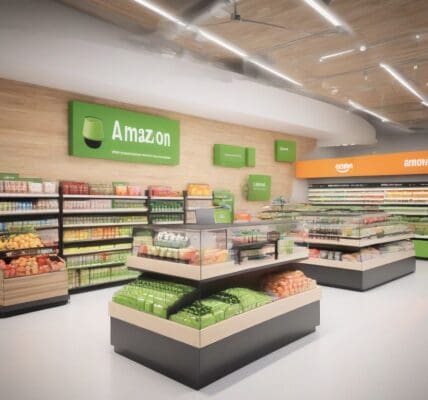In an increasingly competitive market, providing a superior customer experience is essential for grocery retailers to capture and retain consumers. Customers today seek convenience, value, and a seamless shopping experience, making it crucial for grocery stores to adapt to these evolving expectations. Insights from industry leaders during the Groceryshop conference in Las Vegas highlight effective strategies for enhancing customer experience in food retail.
1. Employing Digital Shelf Labels
Bryan Leach, CEO of Ibotta, emphasizes the untapped potential of digital shelf labels. Currently, 75% of purchase decisions occur in the aisle, primarily influenced by product placement, packaging, and price. Integrating dynamic digital content can significantly enhance these touchpoints. Imagine walking down an aisle, and a digital display activates, showcasing personalized offers or sustainability information related to nearby products. By doing so, grocery stores can engage shoppers and foster more informed purchasing decisions.
For example, a store could display promotions tailored to individual consumer profiles based on previous purchases. This targeted approach not only increases shopper engagement but also drives sales while enhancing the shopping experience.
2. Eliminating Friction for Shoppers and Manufacturers
Luke Beatty, SVP of digital commerce at Acosta Group, articulates a simple but powerful principle: make shopping easy and convenient. Retailers must focus on minimizing friction points both for shoppers and manufacturers. Today’s shoppers frequently use mobile devices in-store for price checks and product information. Streamlining access to these digital resources can boost consumer satisfaction.
A practical approach is for grocery retailers to partner with manufacturers to ensure that product information is readily available, easily accessible through QR codes or in-store apps. Such alliances can simplify navigation, encourage purchasing, and create a more positive shopping environment.
3. Digitizing the Physical Store
Brad Bogolea, co-founder of Simbe Robotics, points out that the modern consumer’s journey begins with the physical store’s shelf. Ensuring that inventory is accurately tracked and readily available can reduce customer frustration. For instance, implementing shelf-scanning robots can provide real-time inventory updates, enabling store employees to assist customers quickly and effectively.
Consider a scenario where a shopper is looking for a specific item, like a brand of cereal. If the store employs digitization, the customer could quickly locate the product via a mobile app, saving time and enhancing satisfaction. Optimizing the supply chain through technology enhances operational efficiency and elevates the in-store experience.
4. Integrating Digital and Physical Experience
Ethan Chernofsky, SVP of marketing at Placer.ai, highlights the importance of creating a seamless loop between digital and physical interactions. This integration is essential for modern grocery shopping. For example, if a shopper picks up paper towels in the store, an employee could approach and offer to set up a recurring delivery of that item. This proactive engagement melds traditional service with digital convenience, reflecting a consumer-centric approach.
Creating a cohesive experience that allows for follow-up interactions and reminders enhances brand loyalty. Retailers can utilize customer purchase history to adjust the shopping experience accordingly, ensuring relevance at every touchpoint.
5. Increased Automation and Retail Imaging
John Carroll, president of digital commerce and analytic services at Acosta Group, points to automation as a critical investment for profitability. As e-commerce continues to flourish, the profitability of picking, packing, and delivery must be addressed. Retailers should assess their backroom operations and invest in automation technologies to streamline product handling and inventory management.
Investing in automated solutions can lead to quicker turnaround times and a more reliable supply chain. For example, a grocery store utilizing automated picking systems can drastically reduce delivery times, making it a more attractive option for customers who value efficiency.
Conclusion
Improving customer experience in grocery retail relies on the strategic integration of technology and human interaction. By employing digital tools, eliminating friction, digitizing shelves, and enhancing automation, grocery stores can create a shopping environment that resonates with today’s consumers. The focus should remain not only on selling products but also on crafting memorable experiences that keep customers returning to the store.
As the grocery landscape evolves, those retailers that prioritize customer experience will not only survive but thrive.












